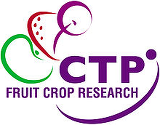october 2021 – september 2025
Camila Gonzalez

Cultivated strawberries (Fragaria x ananassa) are generally classified as seasonal flowering (SF) or perpetual flowering (PF). SF varieties usually flower once in the spring while PF varieties continue flowering throughout the growing season under moderate temperatures. The regulation of flowering has been extensively studied in the SF woodland strawberry Fragaria vesca, in which TERMINAL FLOWERING 1 (FvTFL1) suppresses the expression of the flowering inducing gene FLOWERING LOCUS T1 (FvFT1) under short days, resulting in SF habit. FvTFL1 mutants, on the other hand, do not suppress the activity of FvFT1, resulting in the PF habit.
The flowering pathway in woodland strawberries seems to differ in the cultivated strawberry as the PERPETUAL FLOWERING AND RUNNERING (PFRU) locus has been hypothesised to be a major flower activator that bypasses the represses action of FaTFL1 in PF varieties. However, the exact genes and the key molecular processes that underpin flower initiation in PF cultivated strawberry is not known.
Thus, the aim of this study is to understand the genetic basis of perpetual flowering in Fragaria x ananassa. Understanding the genetic control of PF in the cultivated strawberry is highly desirable for the industry as it can facilitate the selection of high yielding lines and optimization of the propagation processes, which in turn will deliver plant material to growers that has a higher yield potential and more uniform performance.
Research progress
Camila Gonzalez AHDB Annual Report 2022
